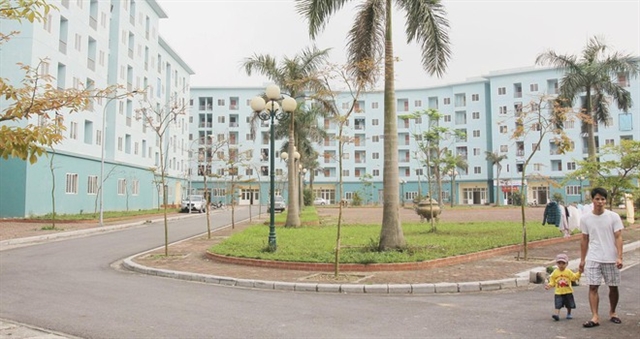
HÀ NỘI — Social housing projects that developers were hesitant to invest in due to capped profit suddenly gained traction as giant developers recently announced plans to step into the segment.
Notably, Vinhomes, a member of Vingroup, said at its annual shareholder meeting in mid-March that Vinhomes would develop social housing projects under the brand Happy Home for low-income earners.
Vinhomes, known for its luxury home brand, plans to develop 500,000 social housing units in the next five years. The first projects would be built in the outskirts of Hà Nội and HCM City at the prices from VNĐ300 million to below VNĐ1 billion each and are expected to be handed over to buyers in June 2023.
Other developers have also stepped into social housing projects.
Him Lam Group recently announced the social housing project Thượng Thanh, which covers more than 60,000sq.m in Long Biên District, Hà Nội. Each department will have areas ranging between 37sq.m and 77sq.m and prices from VNĐ550 million per unit.
Another social housing project of Him Lam was Him Lam Phúc Lợi, also in Long Biên, which will supply about 3,000 apartments to the market.
Early this year, Hưng Thịnh Group, Đồng Tâm Group and Trường Thành Furniture Corporation announced an affordable housing initiative expected to solve the increasing housing demand of low-income earners and help them settle down.
The initiative will be implemented in HCM City, Long An, Bình Dương and Đồng Nai first with 100,000 units with the prices of VNĐ25 million in HCM City and below VNĐ20 million in other areas.
Hòa Bình Group plans to develop 10,000 social housing units in Hoàng Mai District, while Thắng Lợi Group targets building about 10,000 apartments below VNĐ1 billion each on the market this year.
According to Lê Hoàng Châu, President of HCM City Real Estate Association, affordable apartments accounted for just 1 per cent of the total supply to the market in 2020. Notably, 2021 saw no new release of any social housing projects, causing a market imbalance.
There was a severe shortage of affordable homes, Châu said, adding that low-income earners showed real demand for homes, but the prices were beyond their incomes.
Châu said the Government should raise support for developers in social housing developments.
For many years, social housing projects did not attract developers because of low profits, around 10-15 per cent, only equivalent to one-third of the profits when they built commercial housing projects, property expert Nguyễn Nhật Long said.
Another problem was complicated procedures while the Government’s support was not attractive enough, he said.
“I see a change in the mindset of property developers. They do social housing projects not only for profit but also for contributing to social security,” he added.
According to Nguyễn Vĩnh Quỳnh from Minh Bạch Law Firm, the shortage of affordable homes alongside skyrocketing prices means social housing projects are considered a “cool breeze” to soothe the housing market. However, how to build an apartment for a few hundred million đồng remains a question.
Vương Quốc Toàn, chairman of Lan Hưng Group, said that the Government should help the development of social housing projects.
Toàn said that the policy of requiring developers to spend 20 per cent of the land for commercial housing projects for social housing development did not work effectively in reality, which even caused construction delays.
According to Nguyễn Xuân Quang, chairman of Nam Long Group, social housing projects and affordable homes needed breakthroughs in policies and administrative procedures.
It was necessary to develop a specific mechanism for developing social and low-cost commercial housing, Quang said, adding that a clear definition was needed in terms of area and selling price to raise appropriate preferential.
He stressed that preferential financial packages were important to the development of social housing projects.
The Government has issued the national housing development strategy for 2021-30 with a vision for 2045, focusing on developing social housing and homes for workers to meet the demand and affordability of middle and low-income households.
The Government asked the development of social housing projects to work in tandem with socio-economic development planning and synchronous infrastructure. — VNS